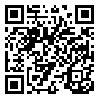Volume 4, Issue 3 (2013)
LRR 2013, 4(3): 155-178 |
Back to browse issues page
Download citation:
BibTeX | RIS | EndNote | Medlars | ProCite | Reference Manager | RefWorks
Send citation to:



BibTeX | RIS | EndNote | Medlars | ProCite | Reference Manager | RefWorks
Send citation to:
Mohammadi M, Abdaltajedini N. Survey of Russian Loanwords in Persian Language: Case Study on Farhang–e Bozorg-e Sokhan. LRR 2013; 4 (3) :155-178
URL: http://lrr.modares.ac.ir/article-14-7821-en.html
URL: http://lrr.modares.ac.ir/article-14-7821-en.html
1- Associate Professor, Department of Russian Language & Literature, Tarbiat Modares University, Tehran, Iran
2- M.A., Department of Russian Language & Literature, Tarbiat Modares University, Tehran, Iran
2- M.A., Department of Russian Language & Literature, Tarbiat Modares University, Tehran, Iran
Abstract: (6552 Views)
Farhang–e Bozorg-e Sokhan (Sokhan’s Grand Dictionary, 8 vol., under the supervision of Hasan Anvari, Sokhan, Tehran, 2002) is relatively a new research in the field of Persian Lexicography. This dictionary as using of the achievements of previous dictionaries has many outstanding innovations various aspects of Lexicography. For example, beside of using of body language, in the process of choosing of words, it has given attention to different aspects of transcription, combinations of words, examples and relevant evidences. Etymology of Persian words is one of the characteristics of this dictionary, especially for the first time, it mentions the Russian origins of 90 Persian words. However, despite of this innovation, we can see some defects and mistakes in the etymology and semantics of Russian loanwords in Persian language; the subject that we will study in this paper. In other words, here we try to answer this main question: “In the Farhang-e Bozorg-e Sokhan, to what extent the Russian loanwords in Persian language has been mentioned correctly and what is their difference with their origins in Russian from the viewpoints of etymology and semantics.
Published: 2013/09/23
| Rights and permissions | |
 |
This work is licensed under a Creative Commons Attribution-NonCommercial 4.0 International License. |






